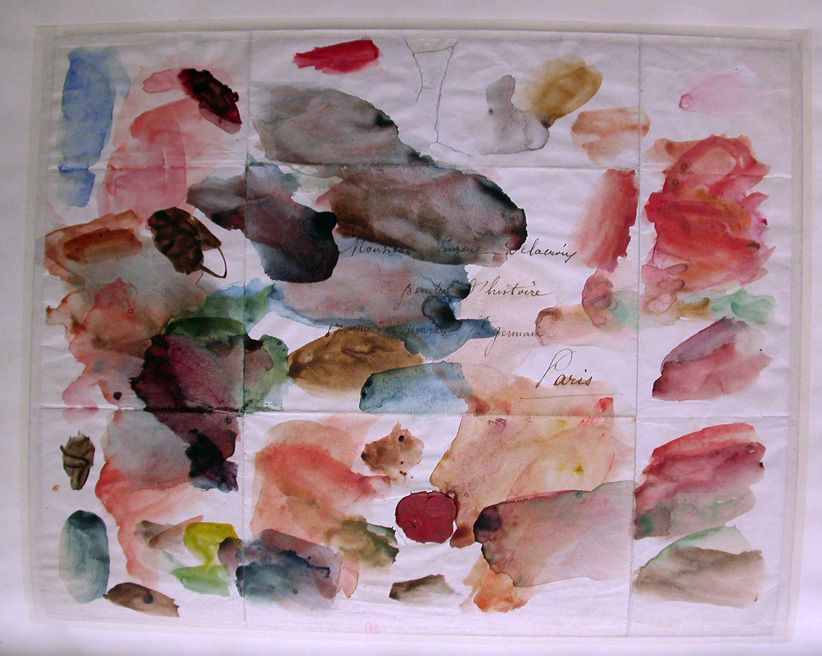- Accès directs
Linda HendersonChercheuse invitée (septembre-octobre 2016)
Biographie
Linda Dalrymple Henderson is the David Bruton, Jr. Centennial Professor in Art History, and a University Distinguished Teaching Professor. In addition to numerous essays, she is the author of The Fourth Dimension and Non-Euclidean Geometry in Modern Art (1983; new, enlarged ed., MIT Press, 2013), Duchamp in Context: Science and Technology in the Large Glass and Related Works (1998), and Reimagining Space: The Park Place Gallery Group in 1960s New York (Blanton Museum of Art, 2008). She also co-edited the anthology From Energy to Information: Representation in Science and Technology, Art, and Literature (2002). A former Guggenheim Fellow, Henderson has recently held fellowships at the International Research Institute for Cultural Technologies and Media Philosophy (Weimar) and the American Academy in Berlin.
Bibliographie
BIBLIOGRAPHY OF RELEVANT ESSAYS
- “Vibratory Modernism: Boccioni, Kupka, and the Ether of Space.” In From Energy to Information: Representation in Science and Technology, Art, and Literature, co-edited Linda Dalrymple Henderson and Bruce Clarke, 126-49. Stanford: Stanford University Press, 2002.
- “Editor’s Introduction: I. Writing Modern Art and Science—An Overview; II. Cubism, Futurism, and Ether Physics in the Early Twentieth Century.” Science in Context, 17 (Winter 2004), 423-66.
- “Modernism and Science.” In Modernism, a volume in the series Comparative History of Literatures in European Languages, ed. Vivian Liska and Astradur Eysteinsson, 383-403. Amsterdam: John Benjamins, 2007.
- “The Image and Imagination of the Fourth Dimension in 20th-Century Art and Culture.” In Configurations: A Journal of Literature, Science, and Technology, 17 (Winter 2009), 131-60.
- “Bilder der Frequenz. Moderne Kunst, elektromagnetische Wellen und der Äther im frühen 20. Jahrhundert” [Painting Frequency: Modern Art, Electromagnetic Waves, and the Ether]. In Archiv für Mediengeschichte 11 (Takt und Frequenz), 51-65. Ed. Friedrich Balke, Bernhard Siegert, und Joseph Vogl. Munich: Wilhelm Fink, 2011.
- “Modern Art and Science 1900-1940.” In The Moderns: Wie sich das 20. Jahrundert in Kunst und Wissenschaft erfunden hat, ed. Cathrin Pichler with Suzanne Neuburger, 175-206. Vienna: Springer Wien NewYork, 2013.
- “Les ‘Meta-réalités’ du cercle moderniste de Stieglitz: Max Weber comme témoin de la quatrième dimension et de l’éther de l’espace.” In Carrefour Stieglitz, ed. Jay Bochner, 275-90.
- Colloque de Cerisy-la-Salle. Rennes: Presses Universitaires de Rennes, 2013.
- “Abstraction, the Ether, and the Fourth Dimension: Kandinsky, Mondrian, and Malevich in Context.” In Kandinsky, Malewitsch, Mondrian: Der Weisse Abgrund Unendlichkeit/The Infinite White Abyss, ed. Marian Ackermann and Isabelle Malz, 37-55 (German), 233-44 (English). Düsseldorf: Kunstsammlung Nordrhein-Westfalen, 2014.
Projet de recherche
The Energies of Modernism: Art, Science, and Occultism in the Early 20th Century
Linda Dalrymple Henderson, The University of Texas at Austin
No history of modern art exists that addresses the broader scientific and occult contexts for the innovations made by artists from the French Cubists, Duchamp, and the Italian Futurists through the development of abstraction by Kupka, Kandinsky, Malevich, and Mondrian. If we sense resonances among the theories of various of these artists, it is, in fact, because they shared an international culture of popularized science and, in many cases, occultism, which itself regularly served as a vehicle for information on the newest science. This was the pre-Einsteinian world of “ether physics” that dominated the popular scientific worldview through the 1910s, centered on the impalpable, wave-bearing ether understood to fill all space and possibly serve as the source of matter itself. In 1997 I coined the phrase “vibratory modernism” to describe the focus of modern artists on a “meta-reality” characterized by vibrating energies and invisible dimensions, and my work has continued to explore this theme. Although international in scope, the Energies of Modernism book project, centers on art and culture in Paris in the early 20th-century (Cubism, Duchamp, and Kupka) as well as the artists Boccioni and Kandinsky, who were both closely engaged with the cultures of science and occultism in Paris.














